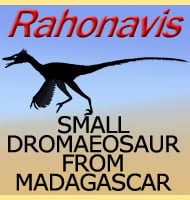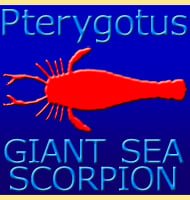In Depth
A not very well known genus of mosasaur, Ectenosaurus has still helped us to confirm that older ideas about how mosasaurs swam are simply wrong. Over a hundred years ago mosasaurs were thought to have been close relatives of snakes (again an idea that is now seen as wrong), and like them the mosasaurs were thought to undulate their entire bodies to swim through the water. However the slab that the Ectenosaurus holotype is preserved on also has the impressions of scales on it. These scales are a few millimetres long, oval and slightly ridged. They also made it so that the trunk of Ectenosaurus would have been fairly rigid, and not suited to the smooth undulating motion that snakes are capable of. This means that swimming propulsion for Ectenosaurus must have been provided by the tail, and as genera such as Platecarpus and Proganthodon show is, Ectenosaurus most probably had a tail fluke also.
Ectenosaurus was first named as a species of Clidastes in 1953, all the way until 1967 when it was renamed as a new genus by Dale Russel.
Further Reading
- Systematics and Morphology of American Mosasaurs (Reptilia, Sauria). - Bulletin of the Peabody Museum of Natural History 23:1-252. - D. A. Russel - 1967. – Three-Dimensionally Preserved Integument Reveals Hydrodynamic Adaptations in the Extinct Marine Lizard Ectenosaurus (Reptilia, Mosasauridae). – PLOS ONE. 6 (11): e27343. – Johan Lindgren, Michael J. Everhart & Michael W. Caldwell – 2011.










